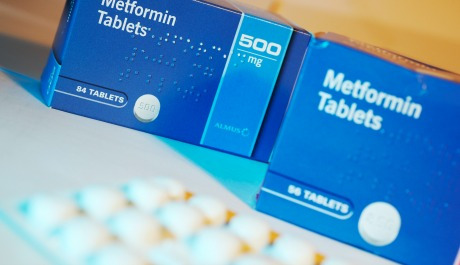In Portsmouth for the past few years, GPs have taken on much of the care of patients with diabetes that would traditionally be done in secondary care. An evaluation of our ‘Super Six’ model of care showed reduced hospital admission for various diabetes and vascular end points during 2014-15, a potential saving of nearly £2 million, although importantly causality has yet to be established. Moving care into the community seems to be the direction of travel for primary care at the moment, and it has certainly worked well for us.
This all started in 2007 when our local PCT agreed to fund a community diabetes team (CDT). This involved myself (an experienced diabetes GPwSI) and two diabetes nurse specialists (DNS) offering telephone advice, email support and surgery visits for GP practices in our area, as well as insulin start up courses and Desmond education for patients newly diagnosed with type 2 diabetes.
Originally we had limited support from the local hospital diabetes consultant team and consequently few patients were discharged from secondary care – even though the intent was to upskill and support primary care in managing more complex patients with diabetes.
However by 2009 Dr Partha Kar and his colleagues in the consultant unit realised if they could define who they could best support and should be seeing, all other patients could be discharged to primary care. Thus the Super Six concept was born. The ‘six’ refers to the type of care we provide: inpatient diabetes, antenatal diabetes, diabetic foot-care, diabetic nephropathy, insulin pumps, type 1 diabetes (individuals with poor control or young people).
The specialist unit defined who could be discharged to primary care knowing that these patients were generally already being regularly seen by general practice in-house diabetes clinics (generally patients with type 2 diabetes on insulin) but that the additional advice and support for those in primary care via the community diabetes team would smooth the process, with the specialist team also available to give phone or email advice. Patient diabetes standards would be maintained, possibly improved, and patients would avoid all the inconvenience of a hospital appointment, which added little value for them.
Key to the upskilling of primary care was a diabetes LES arranged by our local CCG. In order to get the payment, practices had to initiate insulin or GLP1 in patients and therefore had to have a GP and practice nurse who had gone on an insulin-initiating course, run by the community diabetes team (which the consultant had joined for one session a week). You also had to engage with the visits from community team, which meant discussing and accepting suitable patients to be discharged from secondary care.
Changes for our practice
In our practice, prior to a visit from the community team (which occurs every six months) we audited diabetes patient groups who were not achieving targets, for example HbA1c, and presented the data to the consultant and specialist nurse. All the partners and nurses attend the meeting and we invite our community nurse colleagues well. This led to a very focussed discussion about how to help our patients. Before another visit we audited patients within five years of initial diagnosis, reviewed their management and whether they had achieved the NICE targets for A1c, cholesterol and BP. Following discussion with the practice and diabetes community team at our meeting, I contacted all the patients who had not reached the NICE target and discussed with them ways of achieving them.
An additional benefit is getting to know the diabetes team as individuals; it makes it easier to have email or telephone exchanges about specific problems, as well as getting a view about possible future developments in diabetes care, new drugs that have come onto the market or are about to be launched.
Not surprisingly the buy in by different practices across the area has been variable – in a recent audit of practice visits by the community diabetes team, the visit number per practice varied from two to ten over the whole of the past six years.
Nevertheless, the undeniable success of the community diabetes team has been due to the support the community diabetes nurse specialists provide to practice nurses and community nurses, both by telephone support and ‘hand holding’ by jointly assessing and advising on patient management. The relationships, confidence and consistent on-going support have been the fundamental building block to the project’s success. The cherry on the cake is the support by the consultant team.
However, structural changes need to occur between the community diabetes team and GP practices to facilitate better use of the available resource – perhaps the era of multi-professional community providers (MCPs) will enable this by working more collectively with GP practices.
If you would like to write to Pulse, please email [email protected]
Pulse October survey
Take our July 2025 survey to potentially win £1.000 worth of tokens

Visit Pulse Reference for details on 140 symptoms, including easily searchable symptoms and categories, offering you a free platform to check symptoms and receive potential diagnoses during consultations.











